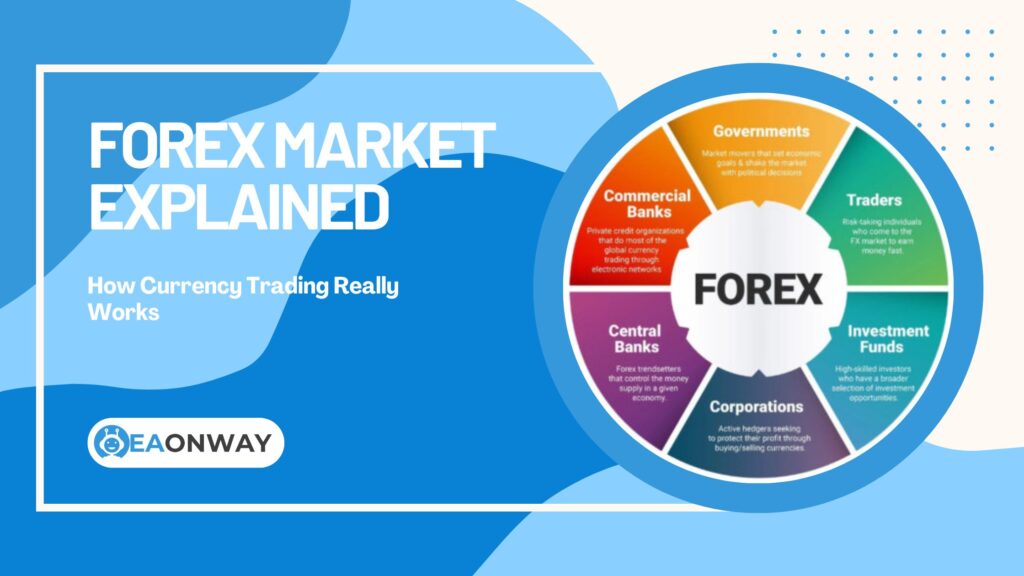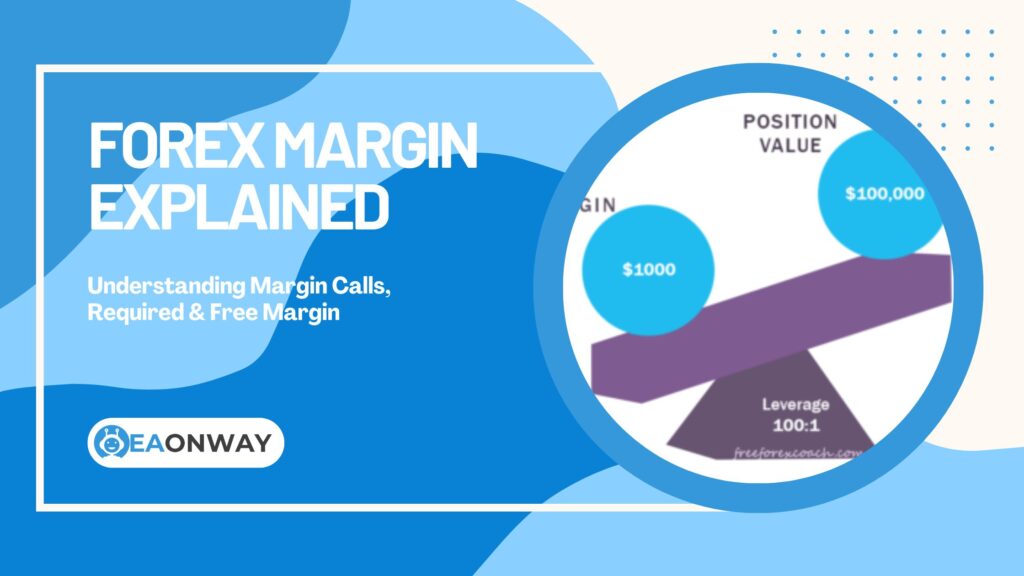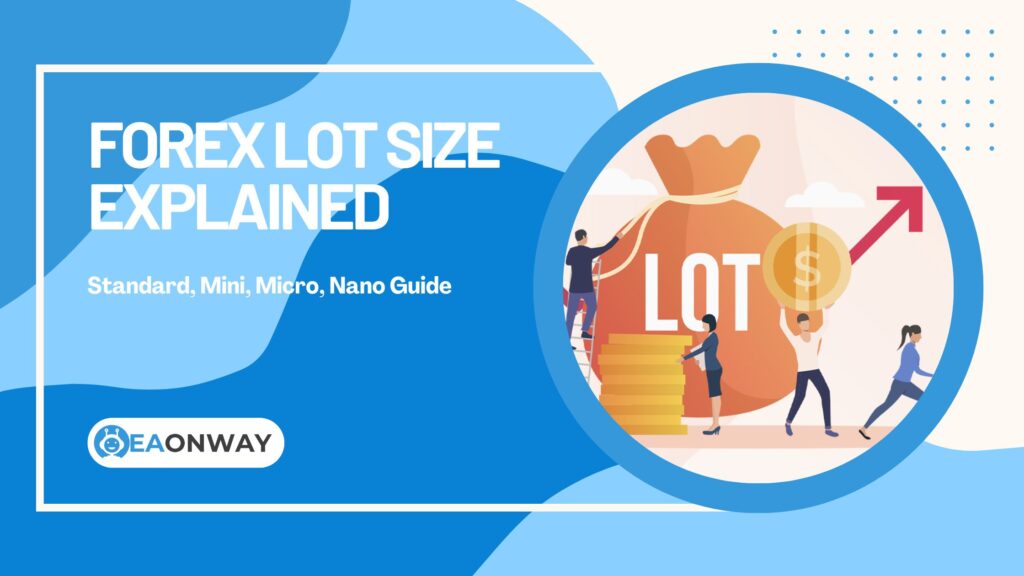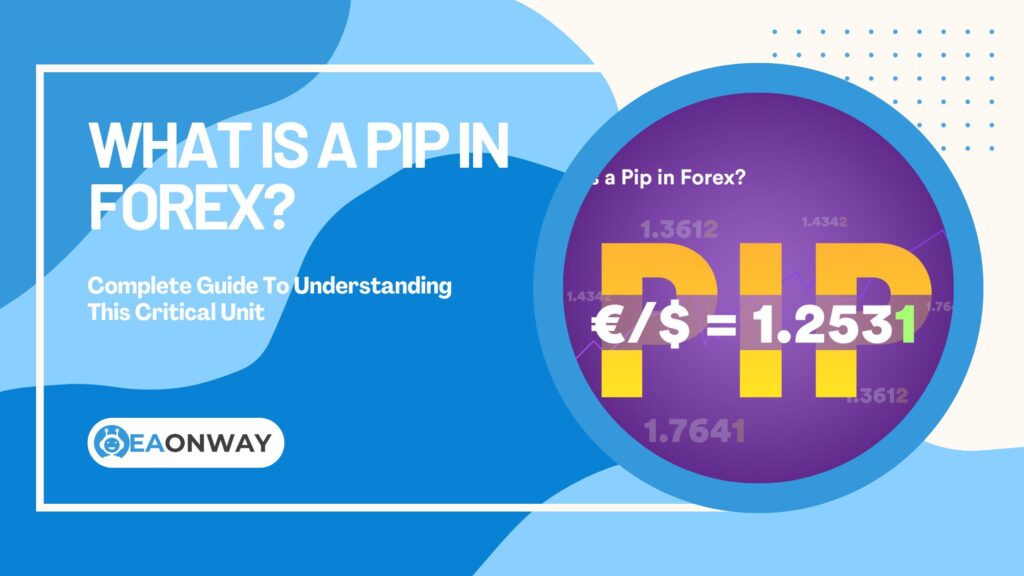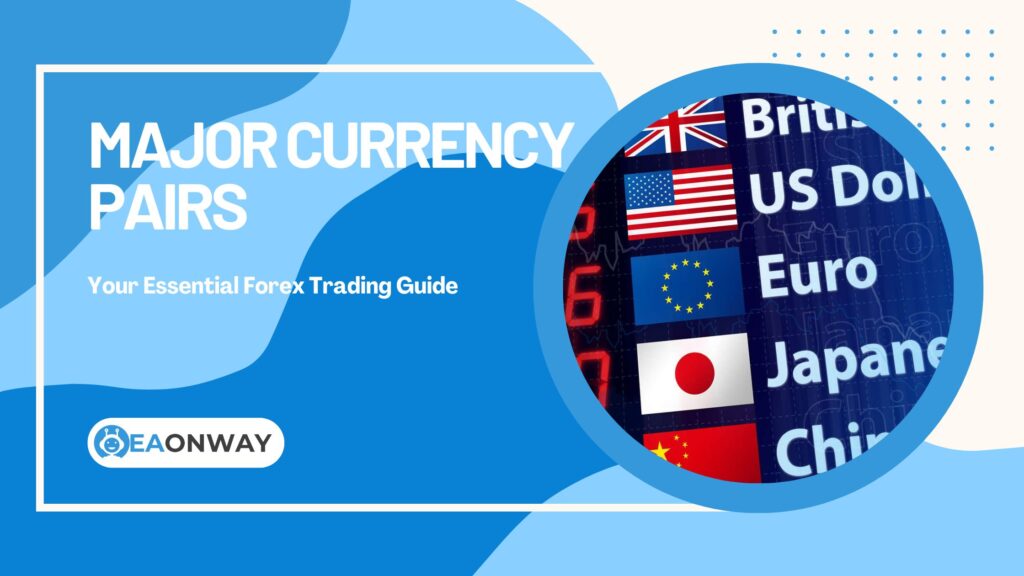What Is Forex Trading And How Does It Work For Beginners?
Have you ever exchanged money before traveling abroad? If so, you’ve already participated in the foreign exchange market on a small scale. What is Forex trading, at its core, is the act of buying one currency while simultaneously selling another, speculating on the changes in their relative values within the vast foreign exchange market. This global marketplace is the largest and most liquid financial market in the world, dwarfing stock markets in daily volume. Understanding its mechanics, key concepts like currency pairs, pips in forex meaning, and the significant risks involved, particularly with leverage in forex, is crucial before considering any involvement.
This article delves into the fundamentals of Forex trading basics. We’ll explain how does forex trading work, define essential terminology, explore the mechanics of the market, and critically, highlight the potential pitfalls and substantial risks every aspiring trader must be aware of. Our goal is to provide clear, objective information to help you grasp the realities of currency trading, moving beyond hype and focusing on foundational knowledge and risk management awareness.
Key Takeaways
- Forex Defined: Forex (Foreign Exchange or FX) trading is the decentralized global market where the world’s currencies are traded. It involves buying one currency and selling another simultaneously.
- Market Mechanics: It operates 24 hours a day, five days a week, across major financial centers worldwide, primarily over-the-counter (OTC) electronically.
- Currency Pairs: Trading is always done in pairs (e.g., EUR/USD), representing the value of one currency (base) relative to another (quote).
- Key Terms: Understanding concepts like exchange rate, pips in forex, spread, bid and ask price, and margin trading is fundamental.
- Leverage is Risky: Leverage in forex allows traders to control large positions with small capital but magnifies both potential profits and potential losses significantly. It’s a major source of risk.
- High Risk Involved: Forex trading involves substantial risk of loss due to leverage, market volatility, and other factors. It is not suitable for everyone, and robust education and risk management are essential.
Understanding the Forex Market
The Forex market is the backbone of international trade and investment, facilitating currency conversion for businesses and governments. However, a massive portion of its activity comes from speculative trading – individuals and institutions attempting to profit from fluctuations in exchange rates.
What Exactly is Forex Trading?
Forex trading, often shortened to FX trading, is the simultaneous buying of one currency and selling of another in the foreign exchange market. Currencies are traded against each other as exchange rate pairs. For example, the EUR/USD pair involves trading the Euro against the US Dollar. When you buy EUR/USD, you are buying Euros and selling US Dollars, speculating that the Euro will strengthen relative to the Dollar. Conversely, selling the pair means selling Euros and buying Dollars. The sheer scale is immense; it’s the largest financial market globally by a significant margin.
How Does the Forex Market Work?
Unlike stock markets with centralized exchanges (like the NYSE), the Forex market is decentralized. It operates “Over-the-Counter” (OTC), meaning trades occur directly between two parties, typically facilitated by a network of banks, financial institutions, and Forex brokers, all connected electronically. This network spans the globe, allowing the market to operate continuously from Monday morning in Sydney to Friday afternoon in New York. Major players include central banks, large commercial banks (forming the interbank market), multinational corporations, hedge funds, investment managers, and increasingly, retail traders like individuals accessing the market via online brokers and Forex trading platforms.
Why is the Forex Market So Large?
The Forex market’s colossal size stems from several factors:
- Global Trade: Businesses need to convert currencies to buy goods and services from other countries.
- International Investment: Investors move capital across borders, requiring currency exchange.
- Government Operations: Central banks manage reserves and influence monetary policy through FX transactions.
- Speculation: The majority of daily volume comes from traders speculating on short-term movements in exchange rates.
The Bank for International Settlements (BIS) conducts a survey every three years. Their 2022 Triennial Central Bank Survey reported that trading in OTC FX markets reached $7.5 trillion per day in April 2022 (Source: BIS Triennial Central Bank Survey, 2022). This massive volume generally translates to high liquidity, meaning large orders can often be executed quickly without significantly impacting the market price for major pairs, although liquidity can vary.
What are the Forex Market Hours?
The Forex market hours run 24 hours a day, five days a week. It follows the sun around the globe, starting with the Sydney session, followed by Tokyo, then London, and finally New York, before cycling back to Sydney.
- Sydney Session: Opens Sunday evening (EST), closes Monday morning.
- Tokyo Session: Overlaps slightly with Sydney.
- London Session: The largest and most active session, overlaps with late Tokyo and early New York.
- New York Session: Overlaps significantly with London, high activity period.
The periods where major sessions overlap (especially London/New York) often see the highest trading volume and volatility, presenting both opportunities and increased risks.
Core Concepts in Forex Trading
To navigate the Forex market, understanding its unique terminology and mechanics is essential. These are the building blocks for comprehending Forex trading basics.
What are Currency Pairs?
Forex trading always involves currency pairs. When you see a quote like EUR/USD = 1.1050, it means:
- Base Currency: The first currency listed (EUR in this example). It’s the currency you are buying or selling.
- Quote Currency (or Counter Currency): The second currency listed (USD). It’s the currency used to express the value of the base currency.
So, EUR/USD = 1.1050 means one Euro is worth 1.1050 US Dollars. If you buy the pair, you expect the Euro to appreciate against the Dollar. If you sell, you expect the Euro to depreciate against the Dollar.
Major, Minor, and Exotic Currency Pairs Explained
Currency pairs are generally categorized based on their trading volume and liquidity:
- Major Currency Pairs: These involve the US Dollar (USD) paired with other major world currencies. They are the most heavily traded and typically have the lowest spreads. Examples: EUR/USD, USD/JPY, GBP/USD, USD/CHF, AUD/USD, USD/CAD, NZD/USD.
- Minor Currency Pairs (Crosses): These pairs consist of major currencies excluding the US Dollar. Examples: EUR/GBP, EUR/JPY, GBP/JPY, AUD/CAD. They are generally liquid but often have slightly wider spreads than majors.
- Exotic Currency Pairs: These involve one major currency paired with a currency from an emerging or smaller economy. Examples: USD/TRY (Turkish Lira), EUR/PLN (Polish Zloty), USD/SGD (Singapore Dollar). These pairs usually have lower liquidity, wider spreads, and can be more volatile, increasing trading risks.
What is an Exchange Rate?
The exchange rate is simply the value of one currency expressed in terms of another. It tells you how much of the quote currency is needed to buy one unit of the base currency. These rates constantly fluctuate based on supply and demand, driven by a myriad of factors including:
- Economic data releases (GDP growth, inflation, unemployment)
- Central bank interest rate decisions and monetary policy statements
- Political stability and events
- Market sentiment and risk appetite
- Natural disasters or geopolitical tensions
Understanding these influences falls under fundamental analysis forex.
What Does ‘Pip’ Mean in Forex?
“Pip” stands for “Percentage in Point” or “Price Interest Point.” It represents the smallest standard unit of change in a currency pair’s exchange rate. For most major currency pairs quoted to four decimal places (e.g., EUR/USD at 1.1050), a pip is the change in the fourth decimal place (0.0001). If EUR/USD moves from 1.1050 to 1.1051, that’s a one-pip increase.
For pairs involving the Japanese Yen (JPY), which are typically quoted to two decimal places (e.g., USD/JPY at 145.50), a pip is the change in the second decimal place (0.01).
Pips are crucial because they are used to calculate profits and losses on trades. The value of a pip depends on the currency pair being traded, the size of the trade (lot size), and the currency your trading account is denominated in. This is a core concept in pips in forex meaning.
Understanding the Bid and Ask Price (The Spread)
When you look at a Forex quote, you’ll typically see two prices:
- Bid Price: The price at which the Forex broker is willing to buy the base currency from you (and you would sell it).
- Ask Price (or Offer Price): The price at which the broker is willing to sell the base currency to you (and you would buy it).
The ask price is always slightly higher than the bid price. The difference between the bid and ask price is called the Forex spread. This spread represents the broker’s compensation for facilitating the trade. When you open a trade, you immediately incur the cost of the spread. For a trade to become profitable, the market price must move in your favor by an amount greater than the spread. Wider spreads mean higher initial trading costs.
Leverage and Margin: The Double-Edged Sword
Leverage and margin are defining features of retail Forex trading, offering the potential for amplified returns but carrying equally amplified risks. Understanding them is paramount.
What is Leverage in Forex Trading?
Leverage in forex allows traders to control a large position size in the market with a relatively small amount of their own capital. It’s essentially borrowed capital provided by the Forex broker. Leverage is expressed as a ratio, such as 50:1, 100:1, or even higher in some jurisdictions (though heavily regulated in others).
For example, with 100:1 leverage, you can control a $100,000 position with only $1,000 of your own money (the margin). While this magnifies potential profits if the market moves in your favor, it equally magnifies potential losses if the market moves against you. A small adverse price movement can result in significant losses, potentially exceeding your initial deposit.
How Does Margin Work?
Margin trading refers to using borrowed funds (leverage) to trade. The amount of your own capital required to open a leveraged position is called the “margin” or “required margin.” It’s not a fee, but rather a good-faith deposit held by the broker to cover potential losses on your open position.
- Used Margin: The total amount of margin currently tied up in open positions.
- Free Margin: The amount of equity in your account available to open new positions or absorb losses on existing ones.
- Margin Call: If the market moves against your position(s) and your account equity falls below a certain percentage of the used margin (the margin call level set by the broker), you will receive a margin call. This requires you to either deposit more funds or close positions to bring your equity back above the required level. Failure to do so can lead to the broker automatically closing some or all of your positions at a loss (a “stop-out”).
Why is High Leverage Extremely Risky?
High leverage is often marketed as a benefit, but it’s arguably the single biggest risk factor in retail Forex trading.
- Amplified Losses: Just as profits are magnified, losses are magnified proportionally. A small market move against you can wipe out a significant portion, or even all, of your trading capital very quickly.
- Reduced Room for Error: With high leverage, even minor price fluctuations can trigger margin calls or stop-outs, closing your position prematurely at a loss.
- Psychological Pressure: The potential for rapid, large losses can lead to emotional decision-making (fear, panic selling), further compounding losses.
Regulatory bodies worldwide recognize these dangers. For instance, the European Securities and Markets Authority (ESMA) implemented strict leverage limits for retail clients, typically ranging from 30:1 for major currency pairs down to 2:1 for cryptocurrencies (Source: ESMA Product Intervention Measures). Similar restrictions exist in the UK (FCA), Australia (ASIC), and other regulated jurisdictions, aiming to protect retail traders from excessive risk. Always check the leverage rules applicable in your region and offered by your broker.
Getting Started: Brokers and Platforms
If you decide to explore Forex trading further (after extensive education and risk assessment), you’ll need a broker and a trading platform.
What is a Forex Broker?
A Forex broker acts as an intermediary between you (the retail trader) and the larger interbank market. They provide access to Forex trading platforms, offer leverage, handle order execution, and hold your trading funds. Brokers make money primarily through the Forex spread or by charging commissions per trade.
There are different types of brokers:
- Dealing Desk (Market Makers): They often take the other side of client trades, creating the market for them. Potential conflict of interest exists, though regulated brokers must adhere to best execution policies.
- No Dealing Desk (NDD): These brokers pass client orders directly to liquidity providers (banks, other institutions).
- STP (Straight Through Processing): Orders routed directly to liquidity providers. Spreads might be variable.
- ECN (Electronic Communication Network): Orders matched directly within a network of participants. Often feature tighter spreads but usually charge a commission per trade.
How Do You Choose a Forex Broker?
Choosing a reputable and suitable broker is critical. Key factors include:
- Regulation: This is paramount. Ensure the broker is regulated by a reputable financial authority in a major jurisdiction (e.g., FCA in the UK, ASIC in Australia, CySEC in Cyprus/EU, CFTC/NFA in the US, MAS in Singapore). Regulation provides oversight and some level of client fund protection (though it doesn’t guarantee profits or prevent losses). Verify the broker’s license number on the regulator’s website.
- Trading Costs: Compare spreads and commissions across brokers for the currency pairs you intend to trade.
- Trading Platform: Ensure they offer a stable, user-friendly platform (like MetaTrader 4/5 or their proprietary software) with the tools you need.
- Account Types & Minimum Deposit: Check if they offer account types suitable for your capital level and trading style.
- Leverage Offered: Be cautious of brokers offering excessively high leverage, especially if they are not strictly regulated. Lower leverage is generally safer for beginners.
- Customer Support: Responsive and helpful support is important, especially when starting.
- Deposit/Withdrawal Methods: Check available options and processing times/fees.
What are Forex Trading Platforms?
A Forex trading platform is the software provided by your broker that allows you to view live currency quotes, analyze charts using technical indicators, place buy and sell orders, and manage your trading account. The most popular platforms globally are MetaTrader 4 (MT4) and MetaTrader 5 (MT5), known for their charting capabilities, extensive range of technical indicators, and support for automated trading systems (Expert Advisors or EAs). Many brokers also offer their own proprietary web-based or downloadable platforms. Key features include real-time quotes, advanced charting tools, various order types (market, limit, stop), and account management functions.
Approaches to Forex Trading
Traders use various methods and strategies to analyze the market and make trading decisions. The two main schools of thought are technical analysis and fundamental analysis.
What is Technical Analysis in Forex?
Technical analysis forex involves studying historical price charts and market statistics to identify patterns and trends, predicting future price movements based on past behavior. Technical analysts believe that all relevant market information is already reflected in the price. They use various tools, including:
- Chart Patterns: Identifying formations like head and shoulders, triangles, flags.
- Trend Lines: Drawing lines to identify the direction and strength of trends.
- Support and Resistance Levels: Identifying price levels where buying or selling pressure has historically emerged.
- Technical Indicators: Mathematical calculations based on price and/or volume (e.g., Moving Averages, Relative Strength Index (RSI), MACD, Fibonacci retracements).
What is Fundamental Analysis in Forex?
Fundamental analysis forex focuses on evaluating a currency’s intrinsic value by examining underlying economic, social, and political factors that influence supply and demand. Fundamental analysts look at:
- Economic Indicators: GDP growth rates, inflation data (CPI), employment figures (e.g., US Non-Farm Payrolls), retail sales, manufacturing PMI.
- Central Bank Policies: Interest rate decisions, quantitative easing/tightening announcements, forward guidance.
- Political Climate: Elections, government stability, geopolitical events.
- Overall Economic Health: Trade balances, budget deficits/surpluses.
The goal is to determine if a currency is overvalued or undervalued relative to another, based on the relative strength of their respective economies and outlooks.
Common Forex Trading Strategies (Brief Overview)
Based on analysis methods and time horizons, traders employ various Forex trading strategies:
- Scalping: Making numerous trades throughout the day to capture very small price movements (a few pips). Requires intense focus, quick execution, and tolerance for high transaction costs.
- Day Trading: Opening and closing positions within the same trading day, aiming to profit from intraday price fluctuations. Avoids overnight risk.
- Swing Trading: Holding positions for several days or weeks to capture larger price swings or “swings” within a broader trend. Requires patience and understanding of medium-term market dynamics.
- Position Trading: Holding positions for weeks, months, or even years, based on long-term fundamental analysis and macroeconomic trends. Requires significant capital and patience.
Note: This is not an exhaustive list, and successful trading requires developing a well-defined strategy with clear entry/exit rules and rigorous risk management.
The Inherent Risks of Forex Trading
It is impossible to overstate the risks associated with Forex trading. While potential rewards exist, the potential for significant financial loss is very real and substantial. This section focuses solely on Forex trading risks.
Why is Forex Trading Considered High Risk?
Forex trading is widely considered high risk primarily due to:
- Leverage: As discussed, leverage magnifies losses just as much as profits. It’s easy to lose your entire investment quickly.
- Market Volatility: Exchange rates can fluctuate rapidly and unpredictably due to economic news, political events, or changes in market sentiment. Sudden, sharp movements can lead to substantial losses.
- Complexity: Understanding global economics, technical analysis, platform mechanics, and risk management requires significant time, effort, and continuous learning.
- Emotional Factors: Fear and greed can drive impulsive decisions, leading to deviations from trading plans and increased losses.
Key Forex Trading Risks You MUST Understand
Beyond leverage and volatility, other risks include:
- Interest Rate Risk: Changes in central bank interest rates can significantly impact currency values.
- Counterparty Risk: The risk that your broker becomes insolvent and unable to return your funds (mitigated by choosing well-regulated brokers with client fund segregation and compensation schemes, where applicable).
- Liquidity Risk: During certain market conditions (e.g., major news releases, market crises), liquidity can dry up, making it difficult to enter or exit trades at desired prices, leading to wider spreads and potential slippage (orders filled at a worse price than requested).
- Operational Risk: Technical issues with your internet connection, computer, or the broker’s platform can prevent you from managing trades effectively.
- Country Risk: Political or economic instability in a country can dramatically affect its currency value.
Can You Lose More Than You Invest?
In some jurisdictions and with certain types of broker accounts, particularly those offering very high leverage without adequate protections, it is possible to lose more money than your initial deposit. This can happen if a sudden, extreme market move (a “gap”) causes your losses to exceed your account equity before the broker can automatically close your position (stop-out).
However, many reputable regulatory bodies (like ESMA in the EU, FCA in the UK, ASIC in Australia) mandate Negative Balance Protection for retail clients. This means that even in extreme circumstances, your losses are limited to the funds in your trading account – you cannot owe the broker more money. It is absolutely crucial to verify if your chosen broker offers Negative Balance Protection, especially if trading with leverage. Always read the broker’s terms and conditions carefully.
The Reality vs. Unrealistic Expectations
The internet is unfortunately filled with unrealistic promises about Forex trading, often portraying it as an easy path to wealth. This is dangerously misleading. The reality is that:
- Forex Trading is Difficult: Consistent profitability requires extensive knowledge, skill, discipline, and robust risk management.
- Most Retail Traders Lose Money: While precise figures vary and can be hard to verify universally, numerous broker disclosures and regulatory warnings indicate that a high percentage of retail Forex traders lose money. For example, brokers regulated in the EU/UK are required to display the percentage of retail investor accounts that lose money when trading CFDs (which includes Forex) with them – these figures are often in the 70-80%+ range.
- “Get Rich Quick” is a Myth: Success, if achieved, typically comes slowly through disciplined strategy execution, continuous learning, and effective capital preservation, not overnight windfalls.
Approaching Forex trading with unrealistic expectations, insufficient education, and poor risk management is a recipe for financial loss.
Final Thoughts: Navigating the Forex Market Wisely
We’ve explored what is Forex trading, how the foreign exchange market functions, defined key terms like currency pairs, pips, and the Forex spread, and examined the critical concepts of leverage in forex and margin trading. We’ve also touched upon different analytical approaches and strategies.
The most crucial takeaway, however, revolves around risk. Forex trading offers opportunities but is intrinsically linked with substantial Forex trading risks. Leverage, while enabling access, is a powerful amplifier of both gains and, more importantly, losses. Market volatility can be swift and unforgiving. Success is not guaranteed, and the path requires significant dedication to education, disciplined strategy development, and unwavering commitment to risk management. Treat it as a serious undertaking requiring continuous learning and realistic expectations, not as a shortcut to easy money. Always prioritize capital preservation and never trade with money you cannot afford to lose.
Disclaimer
Important Risk Warning: The content provided in this article is for educational and informational purposes only and does not constitute financial or investment advice, nor a recommendation or solicitation to buy or sell any currencies or financial instruments. Forex trading involves substantial risk of loss and is not suitable for all investors. Leverage can work against you as well as for you. Before deciding to trade Forex, you should carefully consider your investment objectives, level of experience, and risk appetite. You could sustain a loss of some or all of your initial investment and should not invest money that you cannot afford to lose. Seek advice from an independent financial advisor if you have any doubts. EaOnWay.com does not provide investment advice and is not responsible for any trading losses you may incur.

